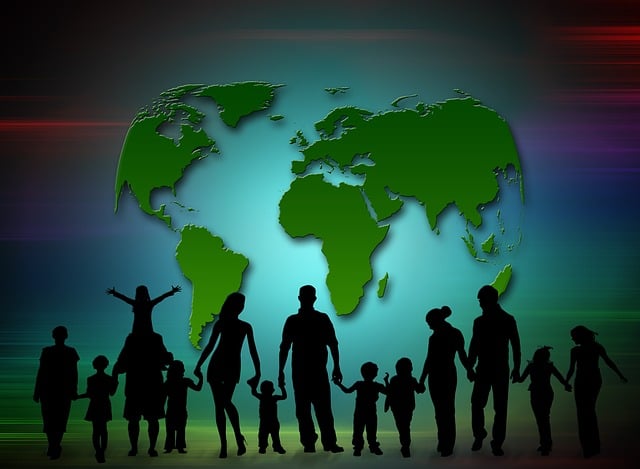Rapid Translate Team
Adopting a child is a major decision, especially when the child is from a different country or culture. International adoption can be a fulfilling way to give foreign children new homes. However, navigating this journey can be challenging for people without any experience.
Luckily, this blog post is a detailed guide to walk anyone through the phases of adoption from another country. It will also explore vital areas, including the legal process, requirements, and what to expect. Read to the end to begin your journey to starting a family.

Table of Contents
Understanding Domestic vs International Adoption
There are different types of adoption, and you need to understand them if you are considering this option. Basically, the argument lies between international and domestic adoption. Let’s break down each of them.
Domestic Adoption
This type of adoption involves adopting a child from within your country. This process often requires working with a local adoption service provider and following state laws. Sometimes, you may get to meet the child’s birth parents, depending on what you both prefer.
Domestic adoption may include newborns, infants, older children, and children in foster care. It is usually easier and faster to adopt a child within your country.
International Adoption
This type refers to adopting a child from a foreign country. These children become a major part of the new family in a different country regardless of race or origin. Most times, you don’t need to meet the child’s birth family or parents during this adoption.
However, every country has its adoption laws and cultural practices to release a child to foreigners. Apart from this, each child has a unique family or health situation that demands extra attention. These factors make this journey more challenging and delicate for adoptive parents.

Popular International Adoption Countries To Choose
The first step to adopting a child is to select a country from which to adopt. Various countries have unique processes, legal demands, and waiting times. However, some countries are more popular for making the process easier. These countries include:
- Columbia: Columbia’s adoption process is relatively straightforward, and you can adopt children of different age ranges.
- China: China is popular for its well-established and organized adoption program. The country especially pays attention to special needs children.
- Ethiopia: Many people have adopted children from various African countries, but Ethiopia is a popular choice. Unfortunately, recent changes have made the adoption process more complex.
- Ukraine: Ukraine has a history of successful adoption, but the legal process may be complex.
- South Korea: Known for its robust adoption system, South Korea especially caters to families interested in adopting infants.
These countries are some of the popular choices for adopting children. However, you can explore and research the adoption laws for children in different countries. While at it, you should also check the adoptable age range and overall experience of previous adoptive families.

Step-By-Step Guide To Adopting a Child From Another Country
Foreign adoption is a complex yet fulfilling option for starting a family. This is why we have provided a detailed guide to help you through. Let’s explore the eight steps to adopting a child from a foreign country.
1. Research and Self-Assessment
Before you begin the adoption process, take time to evaluate your decision. You must be fully ready to accept the child into your life and family. Thus, you must evaluate your family dynamics, personal motivations, and readiness. You need to consider the following factors:
- Financial implications: Adopting a child from another country can be expensive. The process covers application fees, agency charges, and travel expenses.
- Country-specific rules: Review your target country’s adoption criteria. Common criteria include age, marital status, income, and medical records.
- Cultural understanding: Accepting and respecting the child’s cultural background is essential for their identity and sense of belonging.
2. Research and Choose a Country
Apart from the criteria that make you eligible, research the countries that allow intercountry adoption. Look out for factors like:
- Age of the child: Some countries allow people to adopt younger children, while others may offer older ones. In some cases, groups of siblings may be up for adoption.
- Special needs: Check whether you can adopt a child with special needs. Some countries have a high number of special needs children available for adoption.
3. Choose an Adoption Agency
Choose a licensed agency with experience in the international adoption process. It should also have a good standing with the U.S. Department of State or relevant foreign governments. In addition, ensure the agency complies with the Hague Convention guidelines for intercountry adoptions.
The agency should also offer post-adoption support, resources, and counseling. Furthermore, read reviews and connect with families who have successfully adopted from foreign countries through the agency.
4. Complete the Home Study Process
The home study is a simple assessment to review your family’s readiness to adopt a child. This process involves background checks, home visits, financial stability, and interviews by a social worker. During home study, you’ll go through:
- Documentation: You must submit many documents, including health reports, financial statements, and personal references.
- Interviews: Social workers will conduct interviews to gauge your family dynamics, relationships, and parenting ideas.
- Training: You may need to go through training on adoption-related topics, including cultural sensitivity and trauma-informed care.
5. Prepare and Submit Dossier
You need to compile all necessary documents for submission to the foreign authority. These documents include birth certificates, bank statements, marriage certificates, etc. However, you need to translate them into the official language of the child’s country of origin.
You may need to submit notarized or certified translations depending on the country’s demands. The U.S. typically has specific demands for translating documents like birth certificates for the U.S. Citizenship and Immigration Services (USCIS).
6. Wait for Referral
After submitting your dossier, you’ll wait for a child referral from the foreign government. This process can take several months to years, depending on the country and the child’s needs.
7. Travel To Meet the Child
Once matched with a child, travel to the country to meet and bond. Make adequate travel plans and review the process for entering the child’s home country. You should also know about the child’s culture and language to ease the transition.
8. Finalize the Adoption
After bonding with the child, complete the legal process in your home and foreign countries. After finalizing the adoption, apply for the child’s visa and citizenship.
You’ll need to present all the necessary documents, such as the adoption decree and birth certificate. Note that you may need to send post-adoption updates and reports to some countries.

How Much Does International Adoption Cost?
The average cost of adopting a child from a foreign country ranges between $20,000 to $50,000. The actual cost can vary based on several factors, including agency fees, legal costs, travel expenses, and the child’s country. Here’s a breakdown of the total cost:
- Agency fees: Often the highest amount, this part covers home study, matching, and support services.
- Travel costs: This covers flights, meals, and accommodation during your stay in the child’s country.
- Legal fees: This covers finalizing the adoption and getting any important visas.
- Other expenses: This covers document translations, medical exams, and vaccinations.

Ease Your Adoption Journey With Rapid Translate
Adoption is a rewarding yet complex journey that impacts lives and unites families. A detailed guide helps you cross the emotional and legal hurdles to creating your dream family. However, always remember that accurate translations can make everything easier.
The good thing is that Rapid Translate offers high-quality professional services for this purpose. Our professional translation service gives your adoption documents their intended meaning. We take your communication to the next level in over 60 languages.
Make Rapid Translate your translation plug to make your international adoption journey smoother. Order now to enjoy the power of family bonding!
FAQ
Now that we’ve explained the steps to adopting a child from a foreign country, let’s answer some frequently asked questions!
What do you need for international adoption?
You must be a legal adult (25 years or older), financially stable, and physically fit for adoption. You must also pass a home study by a licensed social worker and submit all the vital documents.
How do you find international adoption records?
To find these records, you can:
– Contact the adoption agency that processed the adoption.
– Reach out to the authority that handles adoptions from another country.
– Check court records in the area where you completed the adoption.
– Check online platforms and databases that keep adoption records.
How do you get a U.S. birth certificate for an internationally adopted child?
The process requires you to finalize the adoption in a U.S. court. After this, you must request a new birth certificate from your state’s vital records office. You must submit the court’s adoption decree, the child’s foreign birth certificate, and your proof of identity.













